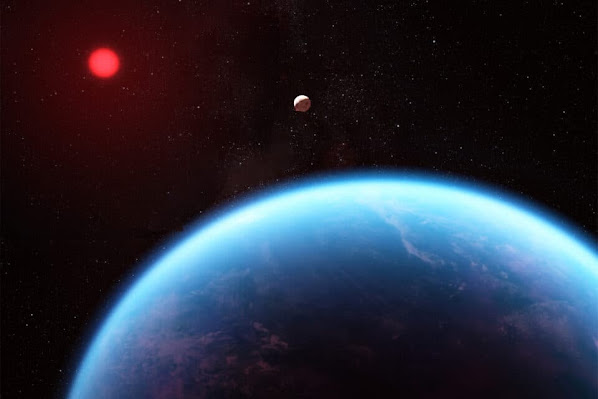
The hunt for life beyond Earth has taken a fascinating turn with K2-18b, a distant exoplanet that keeps revealing itself to be a more and more promising candidate. Recent studies have strengthened the case for K2-18b's potential to harbor life, and scientists have even detected intriguing hints in its atmosphere.
Why K2-18b Stands Out
First discovered in 2015, K2-18b is located a whopping 124 light-years away. But what makes it special is its location within its star system's habitable zone. This "Goldilocks zone" is the area around a star where temperatures are just right for liquid water to exist on a planet's surface – a key ingredient for life as we know it.
Beyond Just the Habitable Zone
In 2019, things got even more exciting when water vapor was spotted in K2-18b's atmosphere. This discovery fueled the fire of possibility. Then, in 2023, the James Webb Space Telescope came into play, performing a detailed analysis of the planet's atmosphere.
Intriguing Atmospheric Traces
The Webb Telescope's observations revealed the presence of carbon dioxide and methane in K2-18b's atmosphere. While exciting, these findings require careful interpretation. The planet's size, larger than Earth, suggests it might be a "hycean" world – a type of gas giant with a thick ocean beneath its atmosphere. While oceans are good, the question remains whether the conditions there are suitable for life.
The Search for Biosignatures
The most intriguing part comes with the hunt for biosignatures – chemical signatures in a planet's atmosphere that could be produced by biological processes. Scientists haven't found the definitive biosignature yet, but there have been interesting hints.
Initial reports suggested the James Webb Telescope might have detected traces of dimethyl sulfide (DMS), a gas on Earth primarily produced by marine life. However, further analysis is needed to confirm this. Even without confirmation of DMS, the lack of known non-biological processes that create methane on a planet with water vapor makes K2-18b a fascinating target for further study.
The Road Ahead
The search for life on K2-18b is far from over. Scientists are still analyzing the Webb Telescope data, and future telescopes may provide even clearer insights. While we can't say for certain if life exists there yet, K2-18b is definitely a frontrunner in the ongoing quest to find habitable worlds beyond our solar system.

Comments
Post a Comment